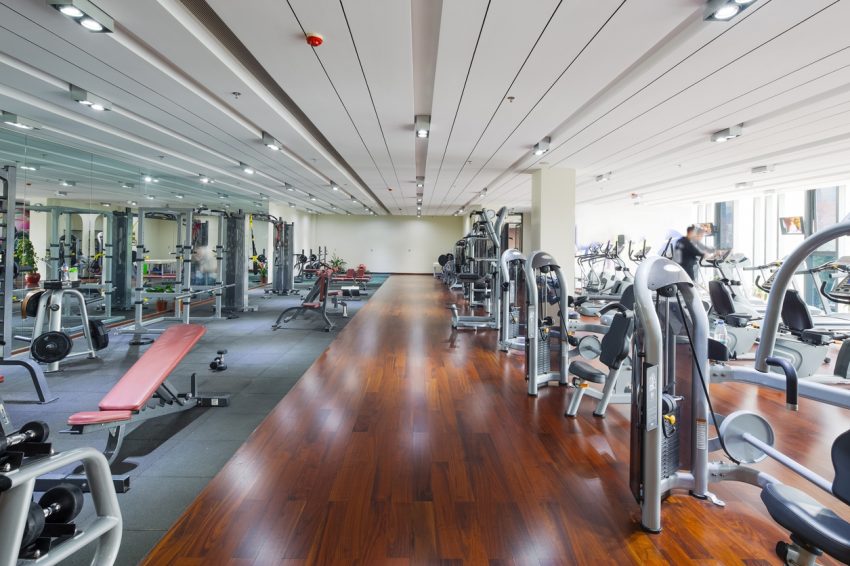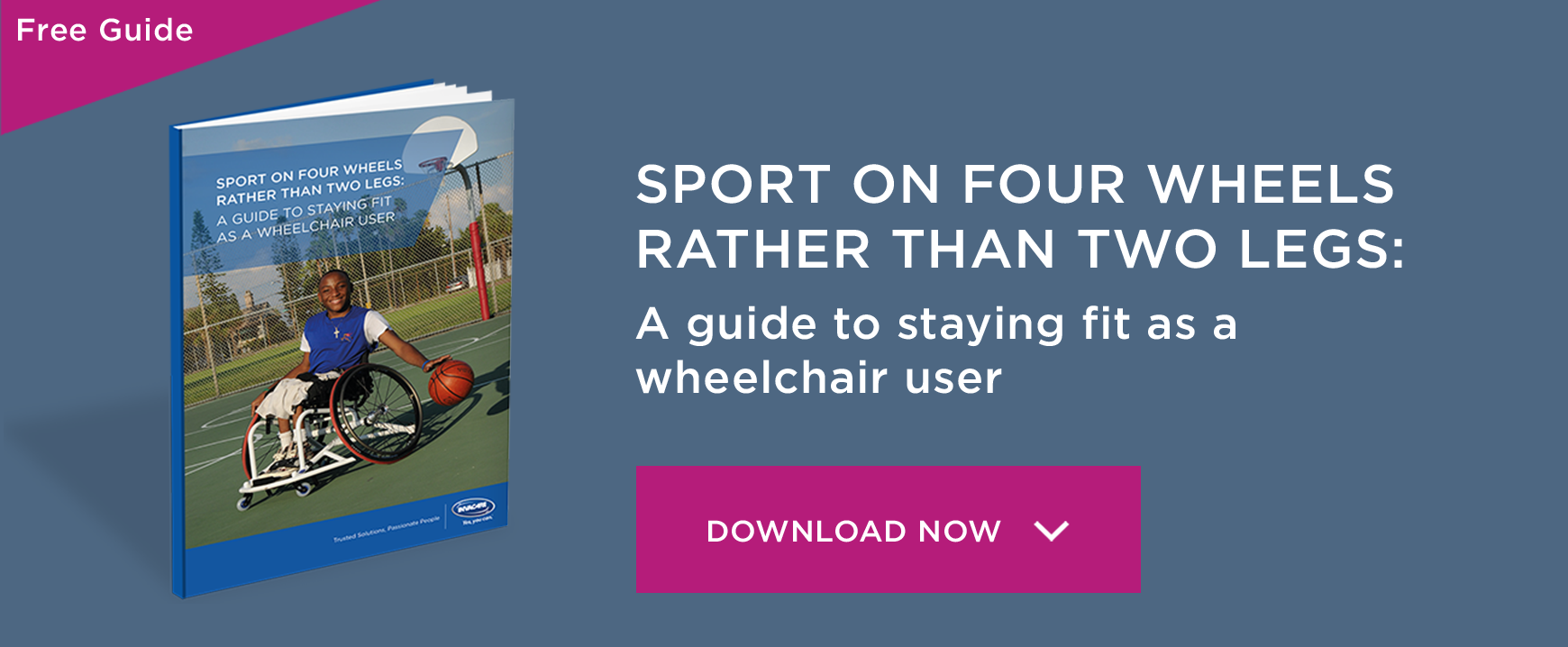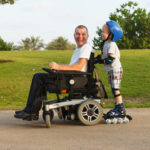Exercising From A Wheelchair: Going To The Gym

The equipment at your local gym won’t be as geared towards wheelchair users as what they use at your rehab facility or physiotherapist’s office.
However, with advice from your doctor and directions from the gym staff, you should be able to make most of the equipment accessible. Workouts can be modified to fit your personal needs. Many pieces of equipment can be used while sitting down. And most of them are adjustable in some manner.
Standard Exercise Recommendations
Anyone with good general health, between the ages of 19-64, is recommended to participate in about 150 minutes or more of aerobic activity each week. It doesn’t matter whether or not you are a wheelchair user, as long as some other health condition doesn’t prevent you from doing the activities.
If you have the ability to exercise every day, a good goal to set would be 30 minutes of exercise per day. It is also recommended that two or more days a week should be spent doing strengthening exercises. You should use weights that are heavy enough to tire you out after one set of 12 to 15 reps.
Exercises For Wheelchair Users
Manual wheelchair users engage their chest and shoulder muscles to propel their chair. This can cause muscle imbalance and tightness and make you more prone to injury. To counteract this imbalance, it is important to work your back muscles. Exercises that replicate a pulling motion, such as a pull-up, can help.
It’s also important to strengthen the smaller muscles around the shoulder and chest. They can become weakened from inactivity. Resistance bands are helpful in providing this type of exercise, and how they can be positioned and used is highly adjustable.
Choosing A Gym
Meeting with the gym management is a good idea before deciding to join a gym. You should check out several different gyms in your area to determine which one will be the best fit for you. Sharing your accommodation needs and concerns with them will give you insight as to how much they will be willing to work with you. Meeting the gym staff will also give you a good feel as to how welcoming and helpful the rest of the team seems to be.
You will also need to examine the accessibility of the building. Even if the equipment can be adapted, that is not much help if you can’t get through the door or move around freely. Roll through the weight room and see if there is enough space between machines for you to maneuver your chair.
Bringing Assistance
If you are new to working out in a gym, you may want to bring a friend or caregiver with you. Having someone else to help you adjust and access the equipment will be very helpful. While you should be able to roll directly up to some of the equipment, other pieces will require transferring. Your gym assistant can help you with this.
Or, instead of looking at it as bringing a helper, you might want to choose to bring a workout buddy with you. This person could still help you when needed, but their primary goal would be to motivate you and keep you company while you exercise.
Getting Out Of The House
One of the less obvious benefits of joining your local gym is that it gets you out of the house. Physical exercise is important, but maintaining your mental health is just as necessary. You can certainly do exercises at home, and you can even buy hand weights and resistance bands to use right in your own living room. But you would be missing out on the socialization of going to the gym.
The gym does offer some equipment you most likely can’t use at home, but beyond that, it offers interactions that you can’t get at home. Whether it’s talking to a workout buddy or getting exercise tips from one of the gym staff members, these positive social encounters boost your overall health.
Author: Annie Beth Donahue is a professional writer with a health and disability focus.








